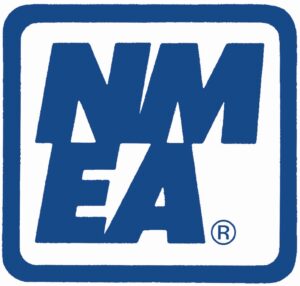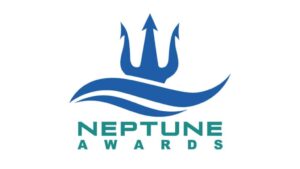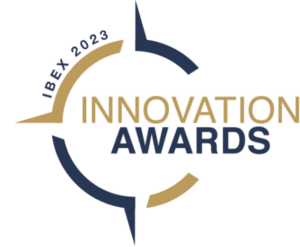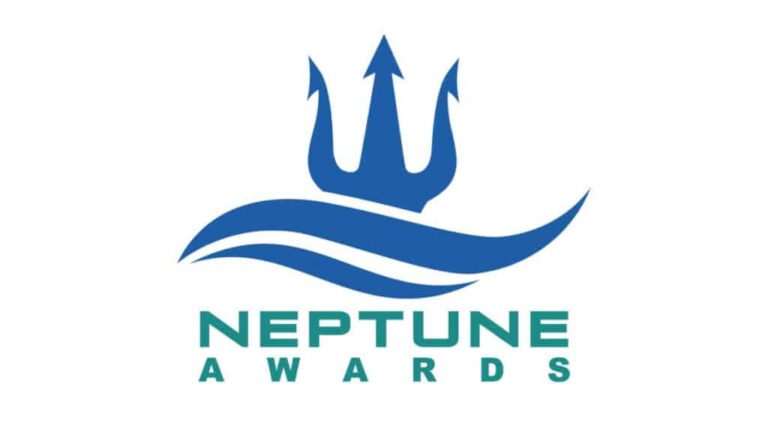
#1 Freedom Boat Club

Innovation is one of those buzzwords that most companies use for their newest product or service. But the real innovators are the startups that disrupt an industry, take the accepted way of business and find a cheaper, simpler solution that the market comes to accept as a new norm.

When Freedom Boat Club launched in 1989, the goal wasn’t to disrupt the industry but to offer an alternative to boat ownership. For its first two decades, the model was hardly groundbreaking, though it quickly found a home among experienced boaters in southwest Florida who wanted to avoid the usual ownership hassles — time and money — while still having access to the water. (more)
#2 Mercury Marine

Mercury’s “Go Boldly” marketing slogan was the mantra that seemed to lead the engine manufacturer in the last year. The judges decided to separate Mercury from its parent, Brunswick Corp., and award it a higher rating because of the sweep and feverish pace of innovation across its facilities and outboard product lines.

The first months of the year saw the culmination of a new product development spree in which Mercury introduced an unprecedented 20 engines, the majority of which were V-6 and V-8 outboards based on new powerhead platforms. Mercury moved away from supercharged 4-strokes to high-displacement, lighter-weight, naturally aspirated engines. Response has been positive from both the industry and consumers. (more)
#3 Brunswick Corp.

Once the plodding, gray battleship of the boating world, Brunswick Corp. can now legitimately claim to be the industry’s big-idea incubator. When it comes to innovation, Brunswick is nimble and moving fast, inside and outside the company.

Several years ago, Brunswick developed teams from its boat, engine and equipment companies to work on new projects. These teams are tasked with exploring emerging technologies that could have a positive impact on boating, then report back to the group about potential applications. The motive is to not only develop possible solutions, but also investigate new ideas, even if the idea never comes to market. (more)
#4 Garmin International

Competition drives innovation in marine electronics. Manufacturers constantly push each other to evolve product lines, making the pace of new-product development fast and relentless.

Garmin International has distinguished itself with equal parts initiative and innovation by not only providing marine electronics to the aftermarket — sales rose double digits last year — but also working closely with boatbuilders and gaining market share at the OEM level. (more)
#5 Volvo Penta

It’s rare to experience innovation first-hand, but one of our editors was on a 68-foot Azimut last summer in Gothenburg, Sweden, when the skipper flipped a switch and put the boat in self-docking mode. Tensions ran high as the yacht backed itself into a slip between two high-tech Volvo Ocean 65s in port for the last leg of the Volvo Ocean Race. Within three minutes, the Azimut was stern-to against the docks, without the captain’s help or coming close to the sailboats.

“Easy Docking” was one of several innovations Volvo Penta showcased last summer. Another was a hybrid IPS engine that will launch by 2021. Comprising Volvo Penta diesels, electric motor drives and energy storage systems, it will be the first complete hybrid system for production builders. (more)
#6 Correct Craft


Just ask Correct Craft CEO Bill Yeargin about innovation, and you’ll actually get an intelligent discussion. When Yeargin took the helm at the company in 2006, it had one brand, Nautique. The company was falling apart. And then the recession hit. For the next six years, Yeargin traveled the world, visiting 42 countries as he attempted to beef up export sales in a flagging domestic market. Then he began a series of acquisitions that included six boat companies, two engine brands, an Austrian builder of electric marine engines, and two Aktion tow-parks. The business has gone from abysmal to about $500 million in annual sales.
Which brings us back to innovation. Yeargin is a student of Harvard’s Clayton Christensen, the guru who says there are two types of innovation: sustaining and disruptive. Sustaining innovation happens in established companies that tweak and modify their products. They are improved but cost more, effectively pricing many consumers out of the market. (more)
#7 Lippert Components


One of the criteria for these awards is how companies have adapted their business models to meet changing market conditions. Lippert Components met that benchmark, then moved far beyond.
Lippert has acquired multiple marine-equipment manufacturers, including Lexington, Highwater, Signature Seating and last year’s purchase of Taylor Made, its largest acquisition. The rapidity of the acquisitions is noteworthy, since it not only gave Lippert instant scale in pontoon-boat furniture and an aftermarket presence, but made it the largest U.S. manufacturer of boat windshields. But what really impressed judges was the seismic shift the Elkhart, Ind.-based firm has made in its corporate culture in the last three years. (more)
#8 Structural Composites

Structural Composites is one of those pioneers that may go unsung in the annals of boatbuilding. However, the judges recognized that the West Melbourne, Fla.-based company has consistently helped create new generations of lighter, stronger and more efficient boats by advancing materials and construction methods, often developed for other industries.
Hybrid-aluminum, N-glass and other combinations of materials are just some of the materials Structural Composites has developed for recreational marine and other industries, such as aerospace, defense, theme parks, and road and rail transportation.
In the last year, its CoCure Advanced Marine Coatings has proved to be a way to replace conventional gelcoat with a flexible coating that combines advanced weathering and crack resistance with reduced environmental impact. On Navy combatant vessels, CoCure coatings have been combined with Prisma single-skin construction and a suspended deck design to mitigate wave shock loads on passengers. CoCure Metal Hybrid Composites merges composite and metal construction. The process makes metals more laminable, which permits new ways to blend metals and composites. The technology won the 2017 CAMX Award. (more)
#9 Seakeeper


Just 10 years ago, Seakeeper was a fledgling company that had signed a deal with Azimut Yachts to offer its single-model gyroscopic stabilizer as an option. Co-founders Shep McKenney and John Adams believed in the new technology but were having trouble convincing U.S. builders that its space requirements, weight and cost would appeal to boat owners. That was then.
In the last decade, convincing non-believers that stabilization transforms the on-board experience has been Seakeeper’s mission, and it has paid off handsomely. The Maryland-based company, with its production facility in Pennsylvania, has now installed 6,000 gyro units and this year plans to ship 2,500 units. That’s more than a third of its entire production run in just the last year. (more)
#10 Siren Marine


A company understands its position in the marketplace when it obtains a registered trademark for an emerging technology long before its competitors have even entered the field. In the case of Siren Marine founder Daniel Harper, it was the “connected boat.”
Harper, a professional yacht captain, understood before most people that boaters needed technology that could keep them connected with their boats when they weren’t on board. It didn’t exist, so Harper developed a cellular-based device that would connect to his boat’s bilge and battery and send him a message if a critical event occurred while he was away. In 2011, he unveiled Pixie and Sprite, the first-generation boat-monitoring devices from his fledgling Siren Marine. (more)
Company To Watch: Nautic-On

One of the more interesting companies in this year’s awards was a new Brunswick Corp. brand that doesn’t really identify with the parent. Nautic-On, in fact, goes out of its way not to be seen as a subsidiary of the industry’s largest conglomerate.

Based downtown in a no-frills office in Chicago’s “Loop Lab,” among dozens of other tech startups, Nautic-On was the first company to graduate from Brunswick’s quasi-secretive innovation incubator, iJET Lab, at the University of Illinois. Nautic-On began as a concept several years ago just as the Internet of Things was taking hold. (more)
Honorable Mention: Navico


Launching a new product every 20 days takes foresight, resources and knowledge of boaters. We recognized Navico for its culture of innovation across its brands — Lowrance, Simrad, C-MAP and B&G — by the number and real-world usability of products it introduced last year.
The range was impressive. FishReveal separates large catchable fish from smaller bait fish; Lowrance HDS Carbon provides near-photographic images on the sides and under the boat; VelocityTrack delivers instant visual feedback on the motion of radar targets in relation to an owner’s boat; and Advanced WindPlot gives sailors a clearer view of wind trends. (more)
Honorable Mention: SureShade


SureShade, the Philadelphia-based manufacturer of marine-grade telescoping shade systems, is the definition of a little company that could. Husband and wife Ron and Dana Russikoff unveiled their first prototype at IBEX in 2007 and launched the company shortly after.
The judges decided that SureShade deserved an honorable mention for several reasons. Not only did its “shade on demand” solve a problem that had been highlighted by scientists for years — protecting skin from exposure to the sun — but it did so with a retractable, streamlined package that did not clutter a boat’s cockpit. (more)
Honorable Mention: Torqeedo


When electric propulsion manufacturer Torqeedo was founded in Munich in 2005, there wasn’t much talk about “electromobility” in the recreational boating industry. Torqeedo forged ahead, launching a succession of boat motors and partnering with battery suppliers as it became the name brand in electric propulsion. The company now offers inboards, outboards and hybrid drive systems from 1 to 80 hp, as it continues to expand its product range.
The judges were impressed with Torqeedo’s constant push into new markets and exploration of fresh technologies. It recently supplied an electric integrated propulsion system with two 50-kW Deep Blue electric inboards for Spain’s first 100-percent solar-powered passenger ferry, a 60-footer that carries 120 people. The project received a European Commercial Marine Award in maritime sustainability. (more)
This article originally appeared in the November 2018 issue.











